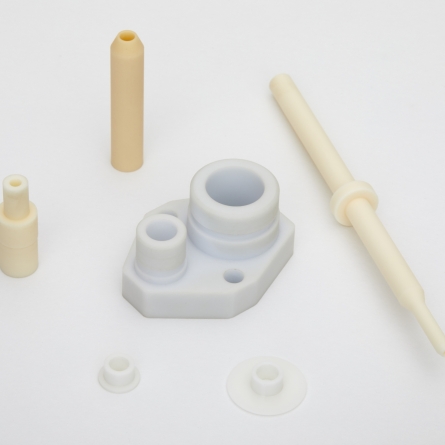Components for the aerospace
Ceramic components offer significant advantages over metal and plastic parts. They retain their full dimensional stability at high temperatures – well above 1000°c. They show a high-wear resistance. They are extremely good electrical insulators. They do not outgas in vacuum environment. Ceramics are inert materials and are resistant to many gases and chemicals. In addition to single ceramic products, Microcertec can also offer hermetic brazed assemblies - glass to metal and ceramic to metal.
MORE INFORMATION
Applications for components made in technical ceramics in the field of aerospace are very diverse :
- accelerometers
- gyroscopes
- vision devices
- antennas
- ignition devices
- pressure sensors
- spark plugs
- magnetic traps
Advanced ceramic and silica products for the aerospace are also very diverse :
- 3D interconnection devices
- coil formers
- electrical insulators
- spark plug insulators
- thermal insulators
- structural parts
- membranes
- magnets
- hermetic glass to metal feedthroughs
- hermetic ceramic to metal connectors
- sensor hermetic packages
- electrode carriers for accelerometers
- ...
Every kind of technical ceramic or silica demonstrates a benefit for use in aerospace applications. This will have to be determined precisely with the end-user :
- aluminium oxide (alumina)
- aluminium nitride (AlN)
- silicon carbide (SiC)
- silicon nitride (Si3N4)
- MgO and Y-TZP zirconium oxide (zirconia)
- quartz, glass, Macor ®
- boron nitride (Bn)
- ferrites, magnets alnico and rare earth
All materials
In addition to be precision ground those ceramics can be metallized with vacuum thin-film sputtering.
For bonding or brazing your components, Microcertec can offer you the following thin-film metallizing :
- titanium - platinum - gold
- chromium - nickel - gold, NiCr-gold
- copper, aluminium, silver, indium, gold-tin
These coatings have the distinction to be applied on three-dimensional parts and be subsequently etched by laser micro-machining in order to create electrical patterns or electrical insulation pads


